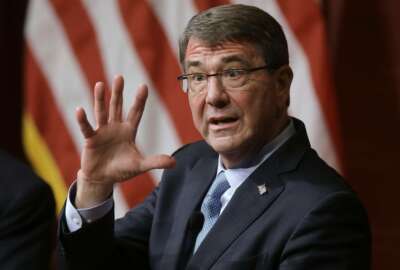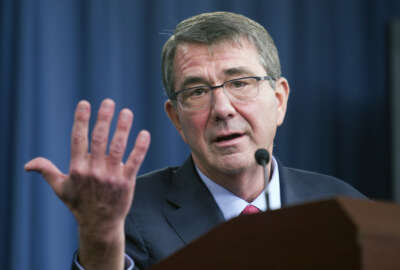
Air Force expands paid parental leave to up to 21 days
The Air Force follows in the Navy's footsteps and expands leave for secondary caregivers.
New parents may be able to get a wink or two more of sleep thanks to a new Air Force policy.
The service announced last week it is expanding paid parental leave for service members whose spouses have a child to up to 21 days after the birth or adoption.
“This is a huge win for our Airmen and families. We talk about hitting singles and advancing runners a lot, but this? This is an extra inning walk off homer. We now have not only the most generous parental leave policy in the Department of Defense, we have the most generous parental leave policy in the federal government. Secretary Wilson and Gen. David L. Goldfein allowed us to take full advantage of the language in the NDAA and the DoDI and allow our Airmen the maximum time possible in the most flexible application possible. And because it took so long to get from the NDAA to implementation, we’re making it retroactive,” Chief Master Sergeant of the Air Force Kaleth O. Wright said in a June 8 Facebook post.
The Air Force previously only allowed 10 days of leave to airmen whose spouse gave birth.
Air Force policy already allows women who give birth 42 days of leave and it allows primary caregivers 42 days of leave. The new policy now extends leave for secondary caregivers to 21.
Fathers can be considered primary caregivers, so technically a new mother and a new father could both take six weeks of leave after the birth of a child or a mother could take 12 weeks and the father 21 days.
Former Defense Secretary Ash Carter opened the possibility for 12 week maternity leave with his Force of the Future initiative and the services quickly followed suit. Increased parental leave was part of the 2017 defense authorization bill.
The Navy was the first to expand its parental leave in January.
“It’s tough to start a family and raise a family while we make deployments, so the first thing we need to do is remove unnecessary obstacles between starting that family and having that Navy career, and we’ve been working hard on those,” Navy personnel chief Vice Adm. Robert Burke.
Copyright © 2025 Federal News Network. All rights reserved. This website is not intended for users located within the European Economic Area.
Scott Maucione is a defense reporter for Federal News Network and reports on human capital, workforce and the Defense Department at-large.
Follow @smaucioneWFED





